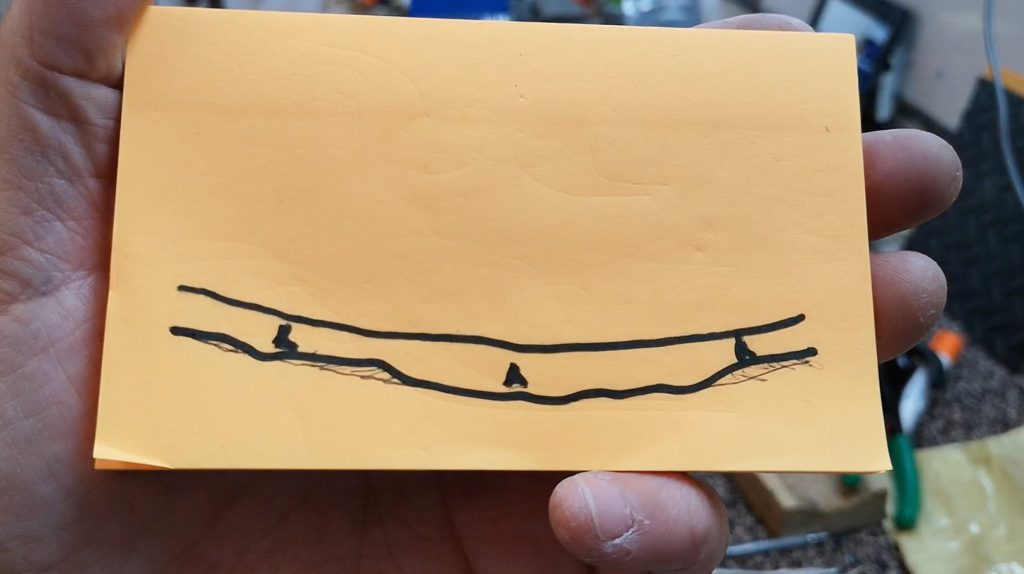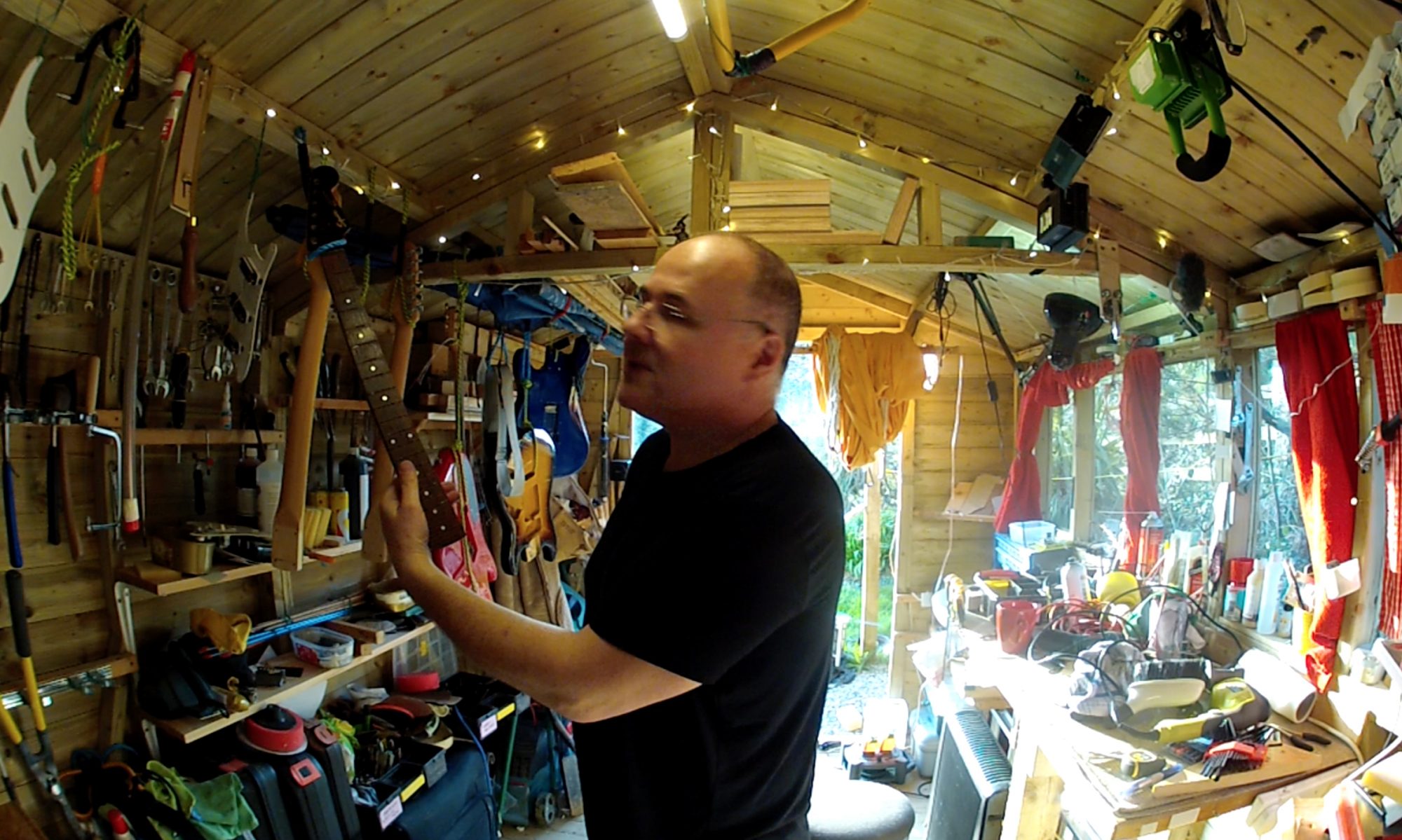
When I began using the ‘Banana’ fret levelling method about 6 years ago I was very confident about it’s power to precision level frets with the strings on under normal playing tension. In case you’ve never heard of this method before it’s very simple and elegant: you set up your guitar the way you want it (including some neck relief / curvature) and then you bend a thin levelling beam (the ‘Banana’ as I call it) to match the neck and level away. This method is a little more accurate than levelling with the strings off and the neck flat but more importantly, because the strings are on I can tell when the buzzes and chokes disappear – at which point I can stop – preserving precious fret metal that other methods waste.
That’s great for high frets and for low frets (because a low fret makes the ones either side of it effectively high and causes the same problems as a high fret. When I started, however, I didn’t think that this method could help where ‘fret slap’ was concerned. I make a distinction between what I call ‘Fret Buzz’ (buzz caused by high or low frets found in specific spots on the neck) and ‘Fret Slap’ (a kind of buzz typically felt / heard on every fret of a string all the way up the neck). I worked out that ‘Fret Slap’ was caused by the strings not having quite enough room to move / spin and hitting the frets as they moved. The only way to give the strings enough space (the harder the player’s picking or strumming, the more space was needed) was to raise the action at the bridge end or dial in more neck relief to create a greater curve in the neck. Well – that’s what I thought.
It took me until this year to realise that the Banana did help reduce and even cure ‘Fret Slap’ although to begin with I couldn’t understand how it did it. Eventually I worked out that because I ‘calibrate’ the Banana to the neck’s curve using the three brass feel (effectively ‘sampling’ the curve in 3 points) the Banana curve is always an ‘idealised’ version of the curve extrapolated from those 3 points. The Banana (otherwise known as a ‘truss rod with sandpaper on the underside of the flat bar part’) makes a smooth curve while the actual neck underneath it is anything but. Because wood is organic and springy, because the neck is under longitudinal compression and because manufacturing is relatively crude the actual neck is a bumpy, uneven curve – as shown in my sketch (above).
I finally realised that when I level the ‘bumpy’ curve of the fret tops, I am ‘imposing’ the Banana’s ideal curve onto that irregular, lumpy curve described by the fret tops. The Banana gently ‘scoops’ out that imperfect curve and maps its smooth shape into it – and in doing so, opens up a fraction more room for the strings to move in. While the amount of room created in this way is tiny it is enough for me to hear problemmatic ‘Fret Slap’ reduce and then in most cases disappear completely as I level.
The mark of a great tool is its elegance… as well as its power. I think the DIY ‘Banana’ is one of the best ‘home-made’ tools I’ve had the pleasure of using. I’ve probably done a couple of thousand guitar set ups with it now and I have no plans at all of stopping using it.

